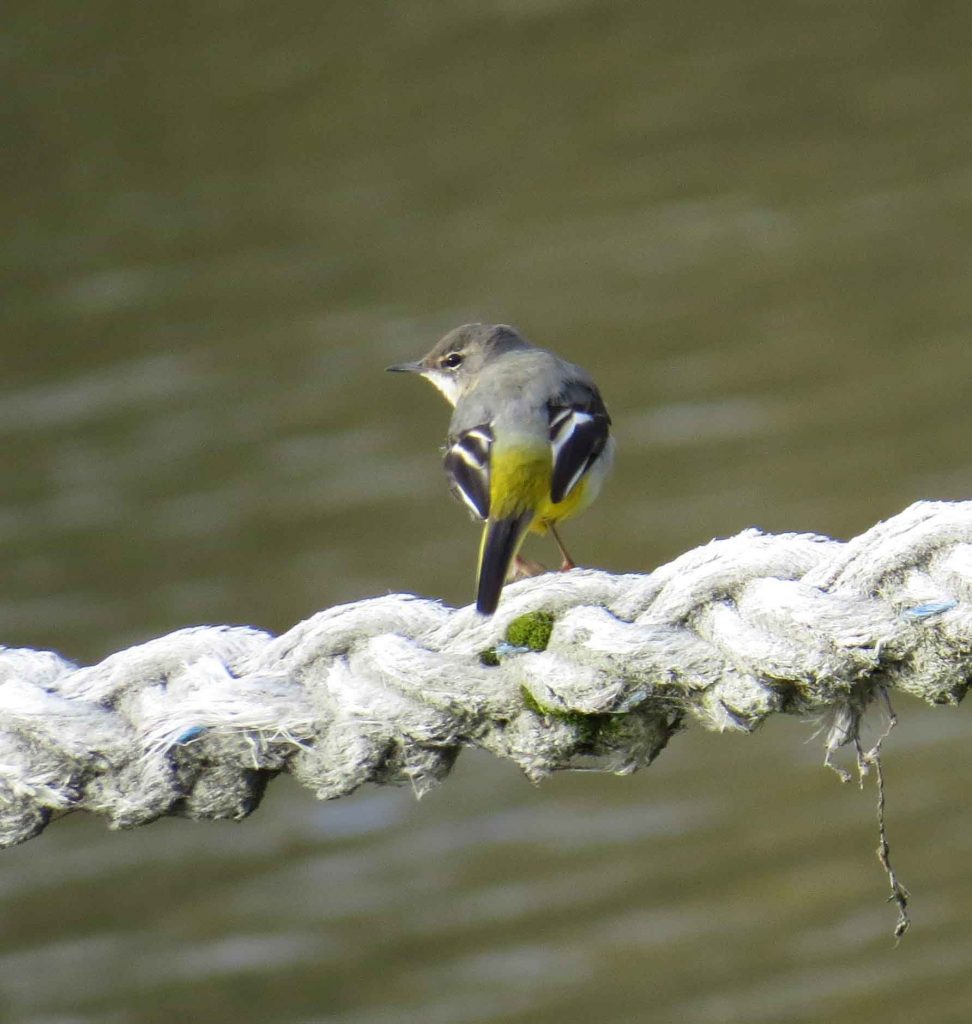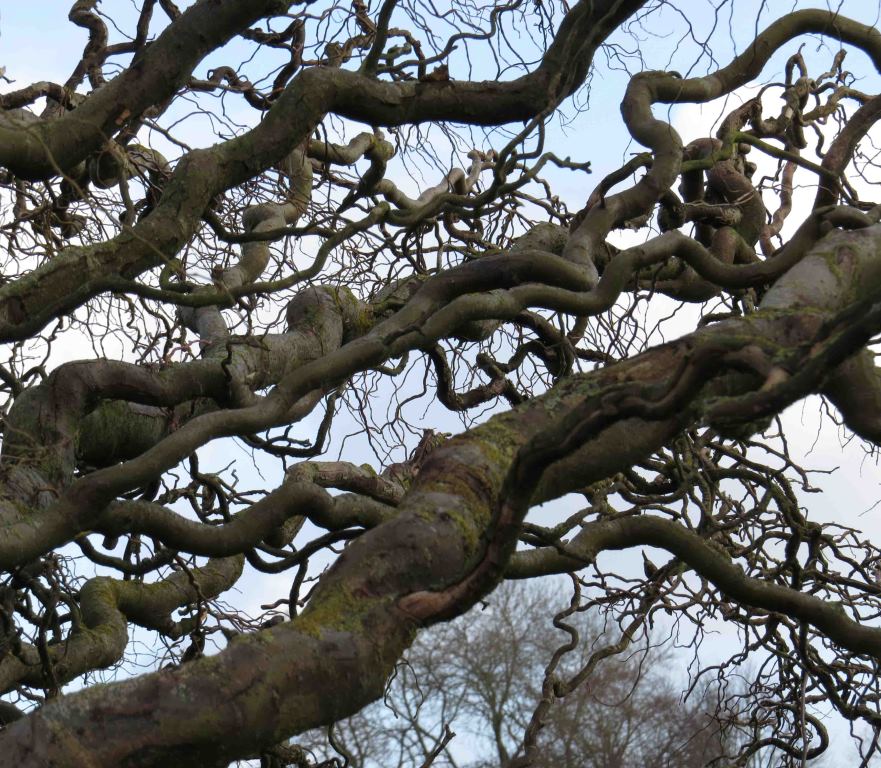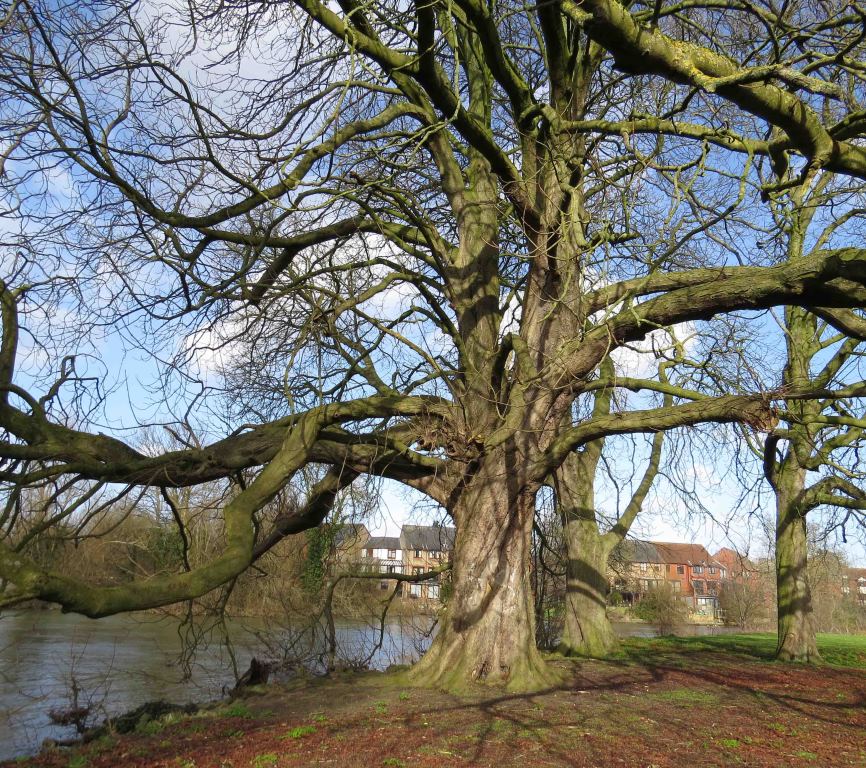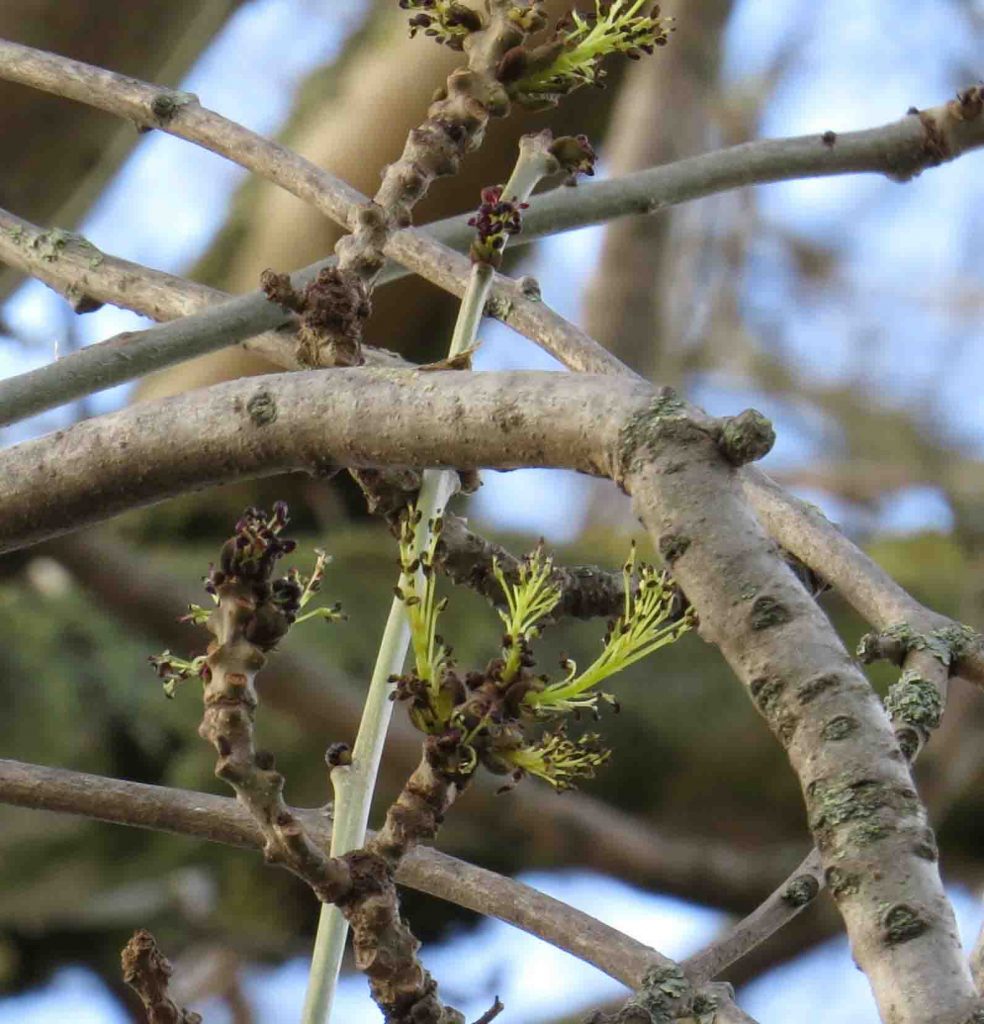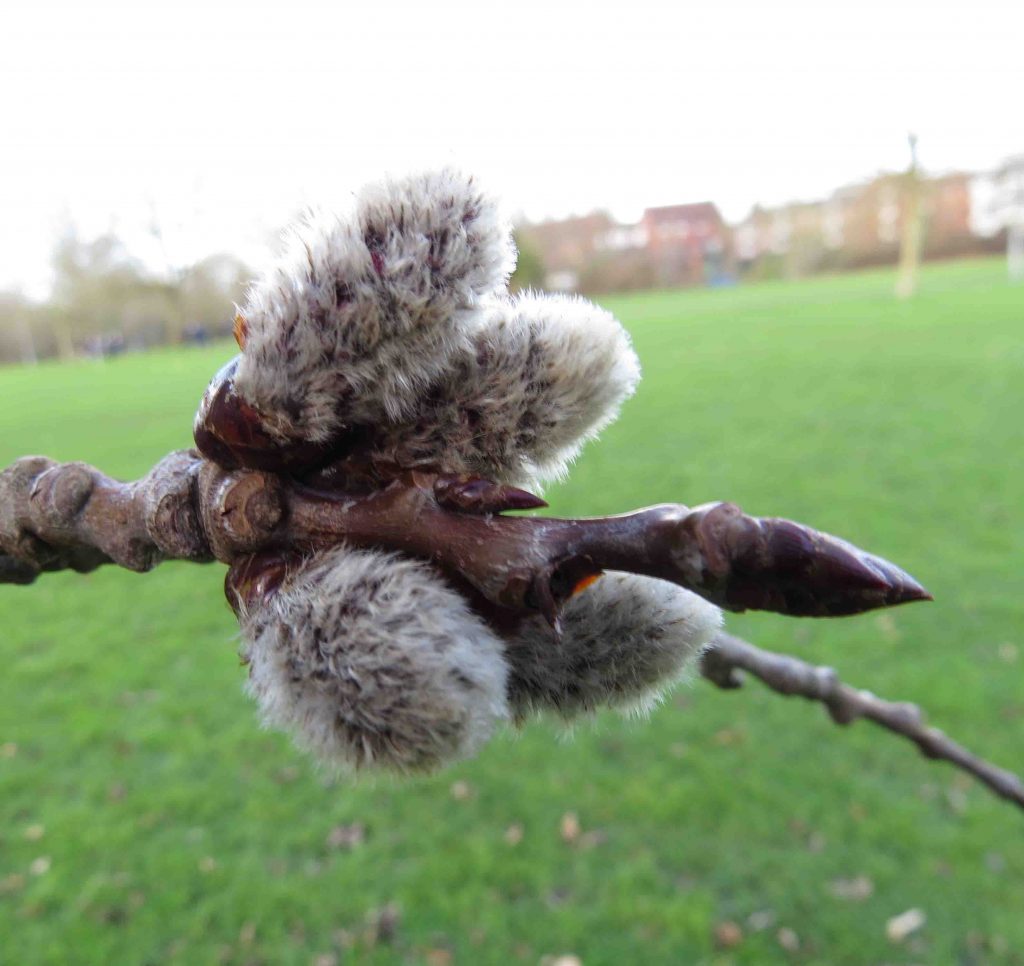Marcus Wheeler led a walk to look at trees by the River Thames in Reading on Saturday 1 February. The group assembled at Hill’s Meadow car park on a windy but mostly sunny morning. First stop was a small Wellingtonia or Giant Redwood, planted by the Caversham branch of Waitrose near the river bank close to Reading Bridge. In the background, Greylag and Canada Geese flew upriver. The walk started out downstream along the footpath on the north bank of the river. Marcus pointed out an Ash tree, with black buds and upward-curving twigs, and a riverside Crack Willow, which was multi-stemmed from the base upwards. Several big old Silver Birches were growing beside the path. At the eastern end of the park was an avenue of tall Lombardy Poplars, with some showing scars where large branches had broken off. A footbridge led across to View Island. On a Hazel beside the path, catkins were fully out and a small red female flower was noted. A large rectangular bare area which was surrounded by green-budded Sycamores had apparently once been a hotel tennis court. A party of Long-tailed Tits flitted through the trees and both Green and Great Spotted Woodpeckers were noted. A narrow path led past a pond, where white pussy willow could be seen. Marcus pointed out a young Ash which was badly affected by Ash-dieback disease. The first Cherry Plum was already in flower.
The walk continued across the footbridge above Caversham weir, where the river level was high and the water was flowing fast. A Grey Wagtail was perching on a riverside rope. Continuing downstream along the south bank of the river, there was a big London Plane with the characteristic tassel-like dangling fruits. Marcus pointed out the flaking regenerative bark and smooth leathery leaves which can be washed clean by rain water, features which enable the tree to grow in polluted urban environments. Closer inspection revealed that a recently fallen tree in King’s Meadow was a Corkscrew Willow. Next to it was an Alder. Back on the riverside path was another much bigger and healthier Corkscrew Willow. Next came a group of White Poplars with the round exit-holes of the Hornet Moth near their bases. On the river beyond, a Great Crested Grebe was diving and a Mute Swan flew upstream. A big Horse Chestnut had spreading limbs and brown sticky buds. New green leaves were already showing on the Elders. The walk continued away from the river, along the road which crosses King’s Meadow. Trees seen here included a Lime, an Italian Alder and an Ash which was already covered in feathery flowers. After some head-scratching, a tree with white furry catkins was identified as an Aspen. The group then retraced their steps across King’s Meadow, back to the weir, past View Island and on to Hill’s Meadow.
Pictures by Fiona Brown


